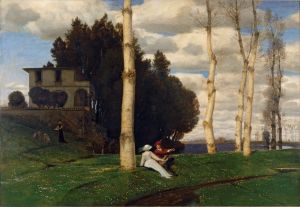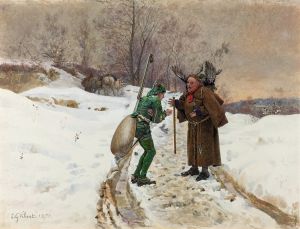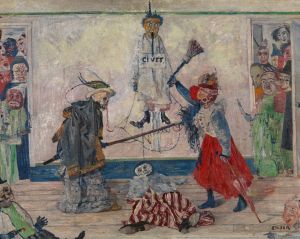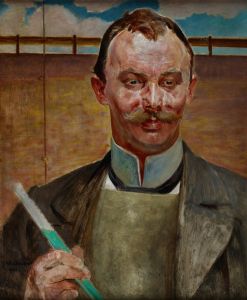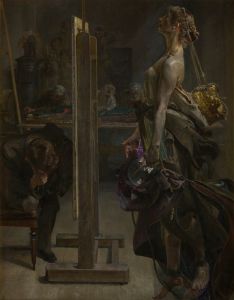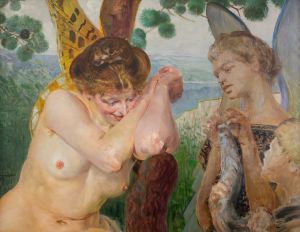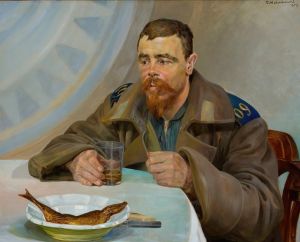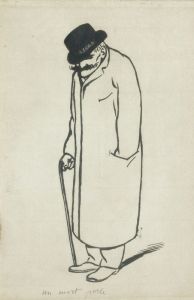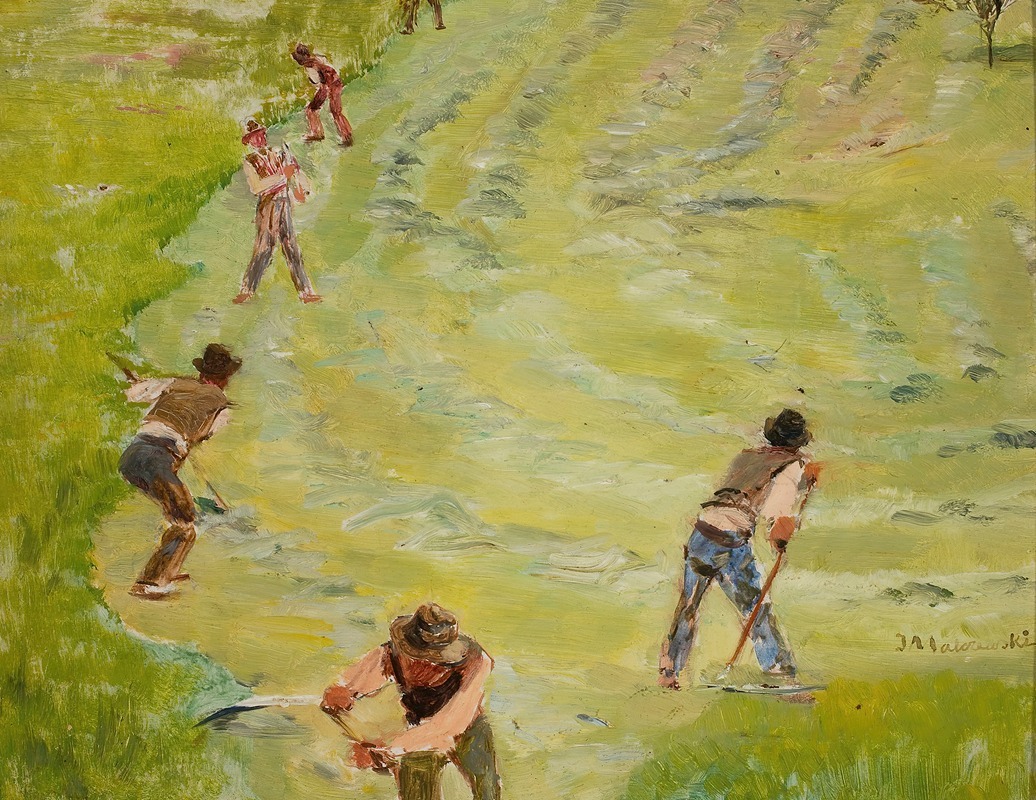
Reapers
A hand-painted replica of Jacek Malczewski’s masterpiece Reapers, meticulously crafted by professional artists to capture the true essence of the original. Each piece is created with museum-quality canvas and rare mineral pigments, carefully painted by experienced artists with delicate brushstrokes and rich, layered colors to perfectly recreate the texture of the original artwork. Unlike machine-printed reproductions, this hand-painted version brings the painting to life, infused with the artist’s emotions and skill in every stroke. Whether for personal collection or home decoration, it instantly elevates the artistic atmosphere of any space.
Jacek Malczewski, a prominent Polish painter associated with the Symbolist movement, created the painting "Reapers" (Polish: "Żniwiarze") in 1891. Malczewski is renowned for his unique style that often blends realism with symbolic and allegorical elements, reflecting the socio-political context of Poland during his lifetime. "Reapers" is a significant work that exemplifies his ability to intertwine national themes with personal and mythical motifs.
The painting "Reapers" depicts a group of peasants engaged in the act of harvesting. This scene is set against a vast, open landscape, typical of the Polish countryside, which Malczewski often used as a backdrop to explore themes of national identity and the struggles of the Polish people. The figures in the painting are portrayed with a sense of dignity and strength, emphasizing the importance of the agrarian lifestyle and its connection to Polish heritage.
Malczewski's use of color and composition in "Reapers" is noteworthy. The earthy tones and dynamic arrangement of figures create a sense of movement and vitality, drawing the viewer's attention to the laborious yet harmonious relationship between the peasants and the land. The painting reflects Malczewski's mastery in capturing the essence of rural life, while also imbuing it with a deeper, symbolic meaning.
The symbolism in "Reapers" can be interpreted in various ways. On one level, it represents the cyclical nature of life and the passage of time, as the act of reaping is both an end and a beginning in the agricultural cycle. On another level, it can be seen as a metaphor for the resilience and perseverance of the Polish people, particularly during a period when Poland was partitioned and lacked political independence. The reapers, therefore, symbolize not only the harvest of crops but also the hope for a future harvest of freedom and national unity.
Malczewski's work often reflects his deep engagement with Polish history and culture, and "Reapers" is no exception. The painting can be viewed as a tribute to the enduring spirit of the Polish peasantry, who played a crucial role in preserving national identity during times of foreign domination. By focusing on the everyday lives of these individuals, Malczewski elevates their status and highlights their contribution to the nation's cultural and historical narrative.
"Reapers" is housed in the National Museum in Kraków, Poland, where it continues to be appreciated for its artistic and historical significance. As with many of Malczewski's works, it invites viewers to reflect on the complex interplay between art, history, and national identity. Through his skillful blending of realism and symbolism, Malczewski has created a painting that resonates with both personal and collective meaning, making "Reapers" a lasting testament to his artistic vision and the enduring spirit of the Polish people.






